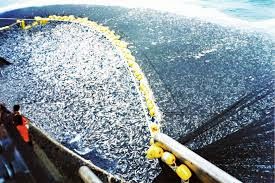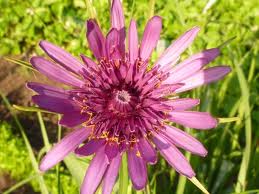Today I want to write about a topic that we all know just too well, at least all of us who live in an environment that requires the heating of houses.
How to heat your house in the future?
Normally, when one of us mentions the term heating fuel or fuel in general, nearly everyone will think about oil and the rising costs entailed. But of course, oil or gas are not the only fuel that are used to heat our homes. Wood is also a fuel, as are turf and coal, not to forget electricity and solar energy, or geothermal energy.
While solar and geothermal energy are becoming more and more popular in some regions, other regions are still heavily relying on either fossil fuel sources, or wood.
Since we are currently residing in Ireland, I became aware of a new phenomenon that has developed here in the last 4-5 years. Traditionally, the main source of heat originated from turf, or peat. This material is one of the lesser known fossil fuels. It is the soil from the moors that developed over 1000's of years by decaying organic matter. Turf is, for all intents and purposes, the prelude to coal. Eventually the bog will be buried under the ground and pressure and heat from the ground will act like a slow cooker and compress the turf to what eventually will become coal and if more heat and presure are applied over time, this coal will turn into oil and if more heat and pressure are applied, this oil will turn into gas. All of these materials are good for burning and therefore can be used to heat your home.
 |
| Pic 1: Turf drying in the sun |
The problem of course, is that the time it takes nature to produce those fuels is much longer than it takes to burn them and therefore, we have to consider those resources as finite.
Turf, in contrast to coal and oil brings along a separate problem when used as a fuel source. The bog (and here we distinguish between blanket bog and raised bog) is a unique ecosystem that, despite looking rather desolate, sports a high biodiversity and acts as a huge, long-term carbon sink. So taking all the turf from the bog does not only pose the problem of a disappearing heat resource, but also adds the problem of a disappearing eco-system, which helps us in the daunting task of scrubbing the CO2 out of the atmosphere.
Due to these facts, the Irish government has decided to phase out the production of turf and started to protect the bog-lands in the country.
Bord na Mona, the Irish governmental heating fuel company has already switched off one of their large-scale turf electrical plants and has plans to completely turn away from turf-heated power plants in the future.
The EU has recently invoked a ban on turf-cutting, which is not completely being adhered to by Irish turf farmers. But that is another issue.
With all of this happening, the price of turf has strongly risen and the availability decreased. As a response two things are happening.
1) A large influx of Polish coal for Irish fireplaces can be noticed. Every petrol station and hardware store in this part of the country at least, has signs out advertising good polish coal. In my own humble opinion, this is the most backward way of combatting a fuel crisis. We turned away from coal decades ago as this fuel is one of the dirtiest one can imagine. We are protecting carbon sinks only by putting more carbon, and more soot into the atmosphere. This is simply unacceptable, yet it is becoming quite popular.
 |
| Pic 2: Premium polish coal sold by the Irish governmental company |
2) There is an increase of people who are offering firewood and many people are getting inserts for their old turf fireplaces to be able to burn wood. That itself is not a bad idea, however, it seems to me that the process is fundamentally flawed.
The reason for this is two-fold. For one, the Irish have no idea how to burn wood (Sorry if I offend anyone, but that simply is the truth) and second the wood that is harvested is not planted in a sustainable way.
Here are some tips from a perspective that comes from our experience living in a country that has been working on firewood heat since it was first started. In Canada, nobody would really buy any softwood to heat their home. Nobody that has the choice anyway.
All the wood I have seen for sale here in Ireland is pine or some sort of other softwood. This wood does not contain any heat to speak off. For a comparison here are some BTU levels from different wood types in million BTUs/cord (one cord is 128cft or a stacked pile of 8'x8'x4')
Softwoods
White pine 14.2
Willow 13.0
Spruce 16.0
Sycamore 19.5
Hardwoods
Red Maple 18.7
Paper birch 20.1
Yellow Birch 23.6
Red Oak 24.0
White Oak 25.7
Hardwood also is a much slower burning wood. The density is much higher and a piece of hardwood can last all night if correctly burned.
Another problem that softwood poses when being used as firewood is the amount of creosote that can build up if it isn't correctly burned. Softwood creates a high build up of creosote when burned slow and with little amount of oxygen, ie. when your wood-stove's choke is closed. This creosote will settle in the stove pipe and chimney and can cause chimney fires. Most Irish chimneys are not designed to withstand a chimney fire, where temperatures can reach over 900degC.
 |
| Pic 3: That is what you DON'T want to happen... |
The best way to use wood for heating is to have good, dry (also called seasoned) hardwood. When the log is placed in the fire, the choke should be opened for approximately 10-20 mins and then closed to maintain maximum heat efficiency and the best and cleanest burning. Never burn any green (fresh) wood. It will be slow to burn, not give any heat and on top of that produce a lot of creosote and soot, which in return can cause chimney fires.
Now, back to the problem of what to do. Hardwood is simply not available in a sufficient amounts and coal does not seem to be an option either due to the environmental impacts.
It is difficult to solve this problem. This situation will take time to solve. Wind energy, and geothermal energy are options that will take time to fully develop in this country and many others. Ireland should be seen as an example of what happens when problems that seem so far off in time are ignored to the point when they become acute. Silviculture in Ireland started decades ago and if the planning would have been better, and more hardwood species would have been planted (like birch for example) at least the firewood situation could be a little better now.
I mentioned Canada earlier in this post as an example. In fact, it is far from being a perfect example. What turf is for Ireland, hardwood is for Canada. The amount of hardwood being cut in Canada is immense, while most of the cut areas are either left to succumb to brush and thick forest which can not be used in the next 100 years, the ones that are maintained as agroforestry are exclusively planted with softwoods that promise a fast turnaround of profit.
Ireland and Canada are only two examples that I picked to discuss here briefly. The problem is omnipresent. We are facing a crisis and no one is properly addressing it. The little that is being done is lacking in efficiency and proper planning. The reason for that is the desire for fast profit and the apparent inability of the people in charge to plan further than their own short lives (as most people who are in charge are at least 40 if not 50 years of age, their planning is mostly only done to a max of 20 or maybe 30 years).
Long term planning can be done.
College Hall in Oxford University needed new main beams due to an infestation of powder-post beetles. The college was at a loss how to replace the huge and massive beams. As the college has foresters on their payroll to manage the woodlands owned by the school, the administrators turned to them for counsel. When approached with the problem, the foresters answered by saying that they were wondering when this would happen. As it turns out, foresters 600 years ago knew that the beams in the hall would eventually need replacing and had planted oak trees for exactly that purpose. Over 600 years of planning finally paid off. The trees were cut and milled while new ones were planted in their place...to replace those new beams in another 600 years.
THAT is forward planning with high efficiency level. Not 20 or 30 years for profit planning. It is planning for purpose that is needed today, for us to be able to live comfortable and affordable lives in the next generations (notice plural) to come. We need actions today to solve the many problems we are facing in the future. The heating fuel crisis makes this even more obvious.























